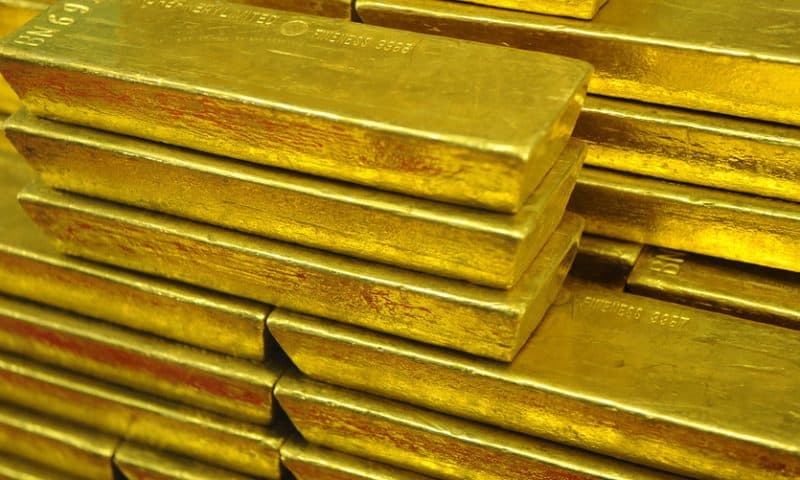Palladium, platinum suffer sharp declines too
Gold futures settled with loss on Thursday after a Federal Reserve rate cut failed to stem strength in the U.S. dollar
Prices for the metal, however, climbed in electronic trading Thursday afternoon, as U.S. President Donald Trump’s latest threat of additional tariffs on Chinese goods lifted demand for the haven metal.
In a tweet, Trump said that “trade talks are continuing, and during talks the U.S. will start, on September 1st, putting a small additional Tariff of 10% on the remaining 300 billion dollars of goods and products coming from China into our Country.”
Gold had already recovered much of the losses from Wednesday, but “the acceleration towards $1450 was due to the President’s tweet regarding the 10% tariff on September 1st,” said Jeff Wright, executive vice president of GoldMining Inc.
“Momentum is behind gold,” he said.
Gold for December delivery GCZ19, +0.88% on Comex was up at $1,449.50 an ounce after tapping high of $1,451.60 in electronic trading. Prices haven’t traded at levels this high since May 2013.
Prices had fallen by $5.40, or 0.4%, to settle at $1,432.40 an ounce after trading as low as $1,412.10. That marked the lowest intraday level since July 25, according to FactSet data.
September silver SIU19, +0.34% also declined by 22.5 cents, or 1.4%, to $16.18 an ounce during the regular trading session.
Apparently, metals traders and investors “were pent-up for an aggressively supportive U.S. Fed, as the widely touted 25 basis-point rate cut ultimately set the stage for a sharp wave of stop loss selling,” analysts at Zaner Metals wrote in a note Thursday. “Some market participants have indicated the Fed was less dovish on their promises and outlook, and that effectively punctured the bullish vibe in gold and silver.”
Gold was pressured in electronic trade Wednesday afternoon after the Fed delivered a widely expected quarter-point interest rate cut, and extended losses after Fed Chairman Jerome Powell described the reduction as a “mid-cycle adjustment” and not necessarily the start of a “lengthy” rate-cutting process. While Powell later emphasized that he didn’t mean Wednesday’s cut was a one-time event, the U.S. dollar rallied, putting pressure on commodities.
The ICE U.S. Dollar Index DXY, +0.04%, a measure of the currency against a basket of six major rivals, rose to a two-year high following the Fed decision Wednesday and spent some timing on the rise Thursday before pulling back to trade 0.2% lower.
Downbeat U.S. economic data released Thursday minor support for haven gold. Data showed the ISM manufacturing index dropped to 51.2% in July to its lowest level since mid-2016. Construction spending also declined by 1.3% in June. Meanwhile, jobless claims climbed by 8,000 to 215,000 at the end of July.
In other metals trading, September palladium PAU19, +1.65% dropped by $110.10, or 7.2%, at $1,414.30 an ounce—the lowest finish since June 12, according to Dow Jones Market Data. October platinum PLV19, +0.70% also lost $27.60, or 3.1%, to $851.30 an ounce.
September copper HGU19, -1.46% settled little changed at $2.6655 a pound.

